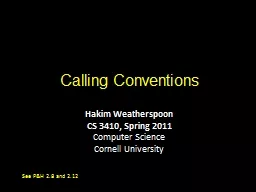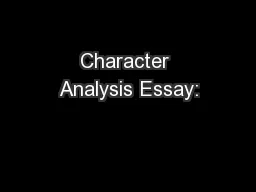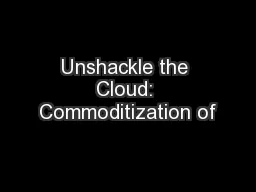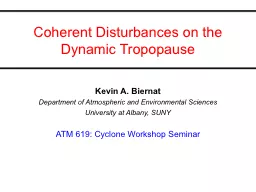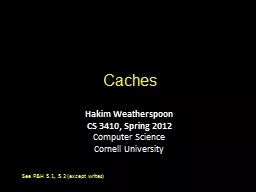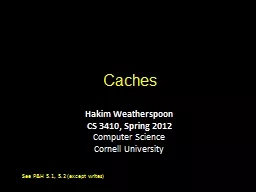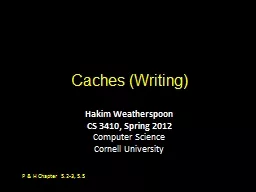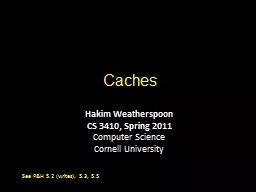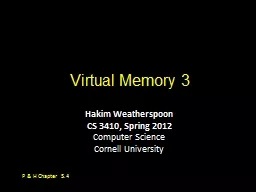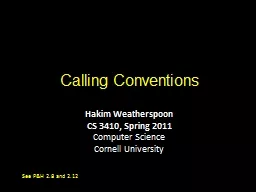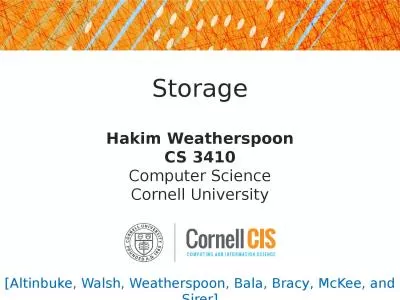PPT-Calling Conventions Hakim Weatherspoon
Author : trish-goza | Published Date : 2019-03-19
CS 3410 Spring 2011 Computer Science Cornell University See PampH 28 and 212 Announcements PA2 due next Friday PA2 builds from PA1 Work with same partner Due
Presentation Embed Code
Download Presentation
Download Presentation The PPT/PDF document "Calling Conventions Hakim Weatherspoon" is the property of its rightful owner. Permission is granted to download and print the materials on this website for personal, non-commercial use only, and to display it on your personal computer provided you do not modify the materials and that you retain all copyright notices contained in the materials. By downloading content from our website, you accept the terms of this agreement.
Calling Conventions Hakim Weatherspoon: Transcript
Download Rules Of Document
"Calling Conventions Hakim Weatherspoon"The content belongs to its owner. You may download and print it for personal use, without modification, and keep all copyright notices. By downloading, you agree to these terms.
Related Documents

